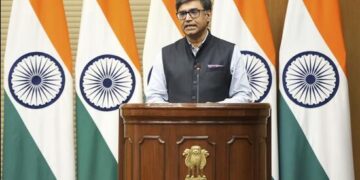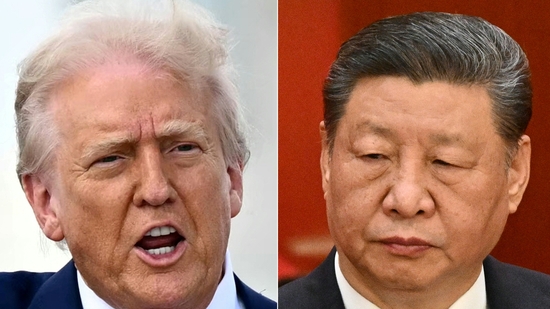President Xi Jinping’s swift and forceful response to former US President Donald Trump’s sweeping tariffs has sent an unambiguous signal to the world: China is ready for a trade war if that’s the path Washington chooses. After weeks of restraint and targeted countermeasures, Beijing escalated tensions by imposing blanket duties and introducing tighter export controls. The message was reinforced in a scathing editorial published in the Communist Party’s official newspaper, stating that China is no longer “clinging to illusions” of striking a deal, though the door remains open for dialogue.
This hardened stance has shaken global markets. With both nations digging in, investors are bracing for prolonged turbulence. Asia recorded its worst trading day since 2008, Hong Kong’s Hang Seng Index saw its steepest plunge since 1997, and Europe’s Stoxx 600 tumbled over 6%. US futures also signaled a rough road ahead.
“Before we can negotiate, we have to fight — because the other side wants to fight first,” said Wu Xinbo, director at Fudan University’s Center for American Studies. He likened any talk of a Trump-Xi call as premature: “You just slapped my face. I’m not going to call and beg your pardon.”
Meanwhile, President Trump has remained defiant, stating he won’t negotiate unless the US trade deficit is eliminated. The prospect of a leadership call is dim as the two leaders are caught in a power dynamic shaped by pride and political pressure.
To brace for prolonged hostilities, Beijing is accelerating internal economic support. Chinese leaders have held high-level meetings to devise new stimulus measures aimed at boosting domestic consumption and insulating the economy from external shocks. The hope is that China’s vast consumer base can help absorb its industrial output as US demand wanes.
Xi is also navigating internal challenges — including deflation and weakened consumer confidence following a housing crisis. Major global banks have raised red flags, warning that the latest US tariffs could weigh heavily on China’s already modest 2025 growth forecast of just 4%.
Still, China isn’t without options. It could weaken the yuan, restrict exports of key minerals, or impose fresh limits on US firms operating in China. Diplomatically, Beijing is also working to deepen economic ties with other countries. From meetings with Japan and South Korea to outreach in Europe and Canada, China is preparing to diversify and reduce its reliance on the US.
Although a full decoupling isn’t imminent, China’s strategy reflects a new phase of assertiveness. It’s no longer reacting defensively — it’s repositioning itself for a drawn-out standoff. “Rather than aiming to inflict damage, the goal is to apply pressure and keep the possibility of dialogue alive,” said Henry Gao, trade law professor at Singapore Management University.
Learning from the first trade war under Trump, China has diversified its trade partnerships. The US now accounts for less than 15% of Chinese exports, down from 19% in 2017. In agriculture, China has slashed soybean imports from the US, turning to Brazil instead. These shifts may give Beijing some breathing space.
As former Chinese diplomat Wang Yiwei noted, quoting an old saying: “Soldiers are most eager to fight when the first battle drum sounds — but that fades by the second round.” Time, it seems, may be China’s quietest weapon in this war of endurance.








 India
India












